What’s the latest diet trend for this year that will help me lose weight? Does this sound familiar? Every year, new fad diets pop up with promises that drastically changing your diet can help you lose weight. But in reality, this type of quick-fix weight loss doesn’t last. How many of you have been on a diet? How many times have you failed? Let me know in the comments below.
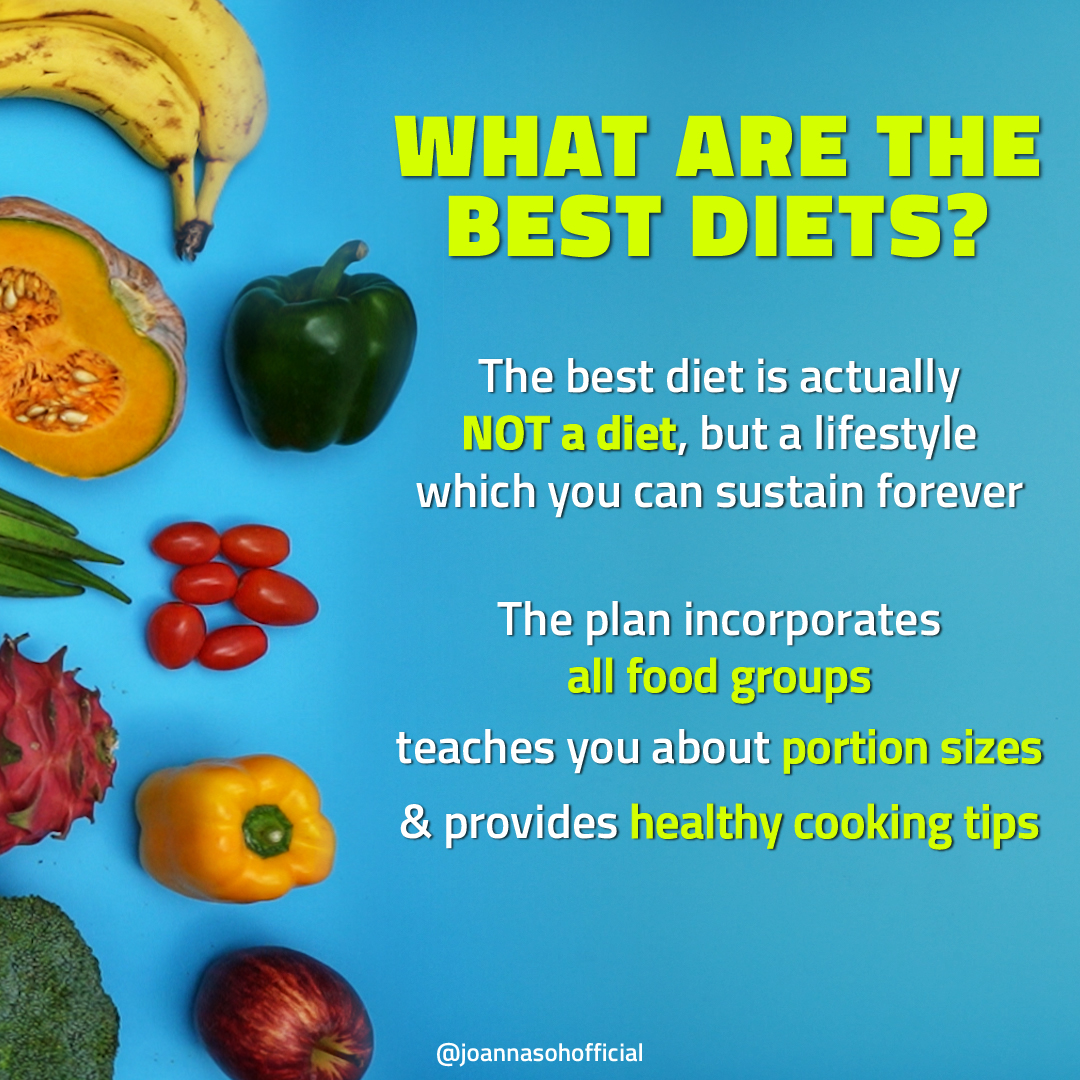
If you really want to go on a “diet” and drop the pounds for good, your best bet is to adopt healthy habits that you will be able to maintain over the long term. So ask yourself these questions before settling on a new diet:
1. Is this diet sustainable for me? “Meaning, can you do it seven days a week or forever?”
2. Is this diet overly restrictive? If you’re going to feel deprived, well it will be tough to stick with it because eventually, those cravings will take over,
3. Will you be able to live your life while on it? That means will you be able to have a social life and still enjoy meals out with your family and friends.
4. Will you be adequately nourished? This is the most important” question to ask yourself. If you are restricting and depriving your body of the nutrients it needs to function, it’s going to do more damage than good.
Just keep this in mind, the best diet is the one that doesn’t feel like a diet. The plan incorporates all food groups, teaches you about portion sizes and provides healthy cooking tips. In fact, the best diet is actually NOT a diet, but a lifestyle which you can sustain forever.
So after going through an endless list of diets, here are my top 3 best diets which have been scientifically proven to help you with weight loss and healthy weight management for life. I’ll be sharing with you the food portions and how you can easily incorporate them into your daily life.
DIET #1 Healthy Balance
A Healthy Balanced diet means eating a variety of foods from each major food group, from proteins and carbohydrates to fruits and vegetables. Even if you are in good health, you should still avoid highly processed foods and added sugars.
PLATING METHOD & PORTION
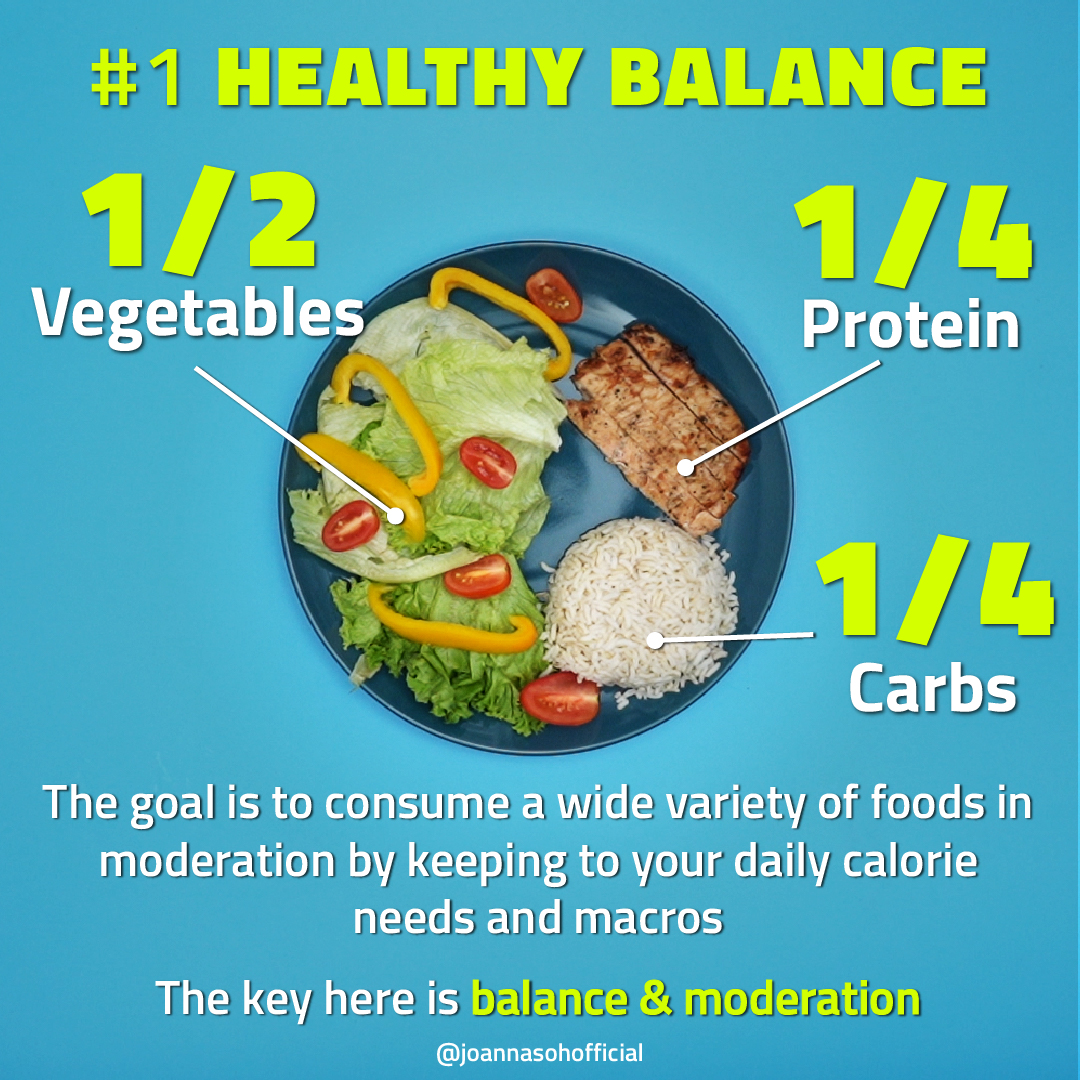
A typical healthy balance macro breakdown would be 50% carbs, 30% fat and 20% protein. To keep it simple, your healthy plate should look like this - 1/2 vegetables, 1/4 protein and 1/4 carbs.
So aim to fill your plate with a variety of colourful vegetables as they are a great source of vitamins, minerals, antioxidants and dietary fibre. Aim to consume 2 - 3 servings of vegetables in each meal.
Here’s what a serving of vegetables looks like:
• 1 cup of raw leafy greens such as spinach or lettuce
• 1/2 cup of chunky vegetables such as broccoli florets, bell peppers and carrots or
• 1/2 cup of vegetable juice
You can also add a piece of fruit to your meal or have it as a snack.
As for protein, go for high-quality proteins such as chicken breast, fish, meat, tempeh, tofu, beans and legumes. The general recommendation is about 0.8g of protein per kg of your body weight, but if you lead an active life, consume between 1.2 - 1.7g of protein per kg of your body weight.
For example, if you weigh 54kgs and consume about 1.5g of protein per kg of your body weight. That means you should consume about 81g of protein a day. How you can achieve that is to consume:
• 2 eggs for breakfast (12g protein)
• 1 portion of Salmon for lunch (30g protein)
• 1/2 cup of Greek Yoghurt as your snack (9g Protein) and
• 1 portion of White Fish for dinner (30g protein).
This gives you a total of 81g of protein. Protein is extremely important to repair and build muscle tissue, transport and store nutrients and coordinate bodily functions.
As for carbohydrates, choose healthy complex carbs such as rice, quinoa, oats, buckwheat noodles, sweet potatoes, pumpkin, wholegrain pasta or wholemeal bread. The main function of carbohydrates is to provide your body with energy.
For example, if you consume 1800 calories a day, and 50% of that is carbs, that means your daily carb intake is about 225g. How you can achieve that is to consume:
• 2 slices of bread for breakfast (30g carbs)
• 1 small bowl (160g) of rice for lunch (45g carbs)
• 1 small bowl (160g) of rice for dinner (45g carbs)
• A banana as your snack (30g carbs)
• A medium (150g) baked sweet potato (30g carbs)
• And not forgetting the 5 servings of vegetables (40g carbs)
That gives you a total of 220g of carbs in a day.
As for healthy fats, you can easily integrate them into your diet by using olive oil in your cooking and consuming oily fish, peanut butter, avocado, nuts and seeds. Healthy fats keep the heart healthy, protect your organs, support cell growth and provide energy.
Here’s what one serving of healthy fats looks like:
• 1 tbsp of oil or butter (14g)
• 1 oz *(24g) of nuts (15g)
• 1/2 an Avocado (15g)
• Fats from 4oz of Salmon fillet (14g)
Remember to consume them in small quantities as they are calorie dense.
IN ESSENCE
So this is a general guideline for the “Healthy Balance” diet. The goal is to consume a wide variety of foods in moderation by keeping to your daily calorie needs and macros. And of course, you can still enjoy your occasional treats of processed foods and desserts, but keep them in small quantities. The key here is balance & moderation.
DIET #2 MEDITERRANEAN DIET
The next diet has been voted as the best diet years after years, it is the Mediterranean diet. So what is the Mediterranean diet and why is it so popular and effective for weight loss?
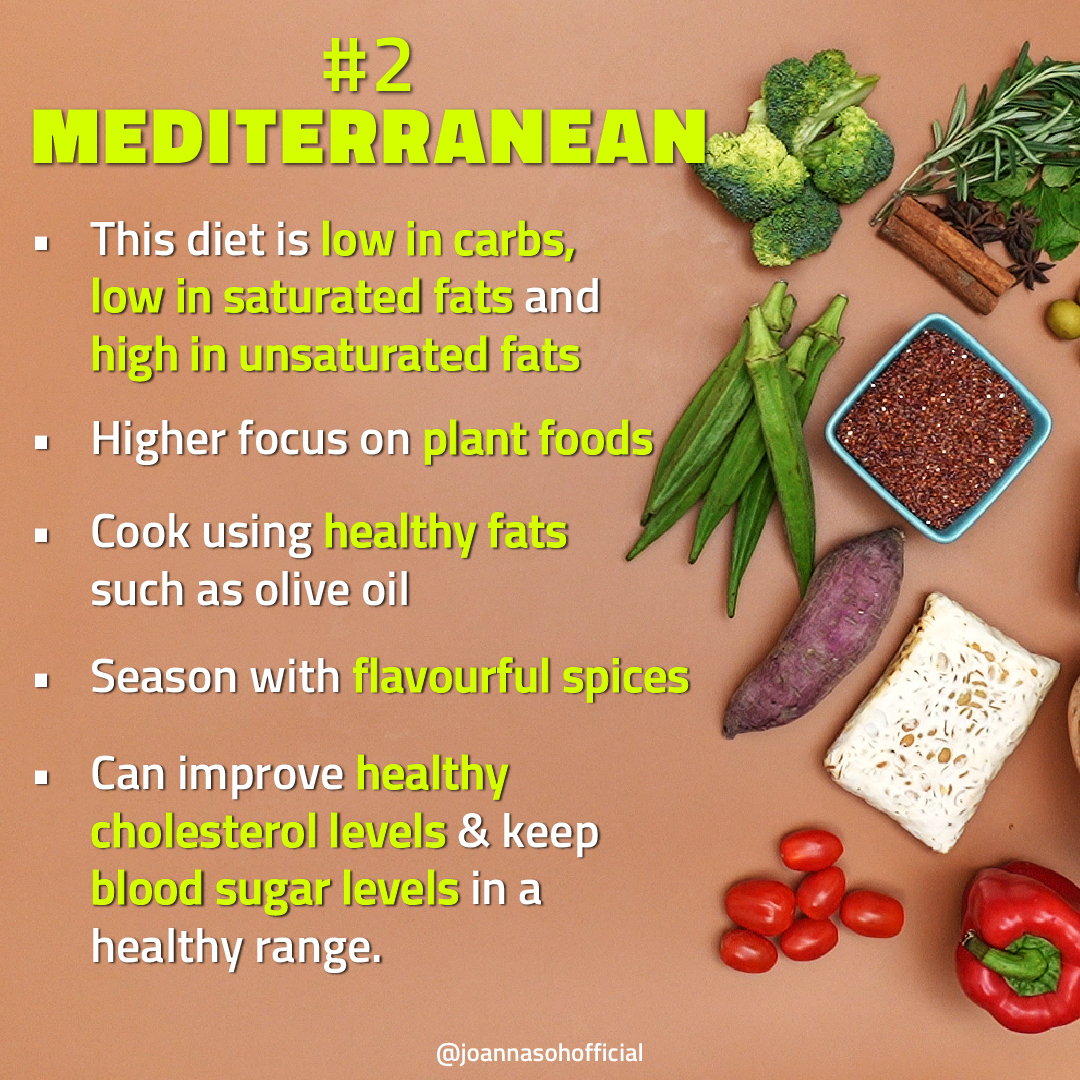
The Mediterranean diet incorporates the traditional healthy living habits of people from the Mediterranean region. This diet is essentially low in carbs, low in saturated fats and high in unsaturated fats. It puts a higher focus on plant foods and cooking using healthy fats such as olive oil with plenty of flavourful spices. Following this diet can improve healthy cholesterol levels and keep blood sugar levels in a healthy range.
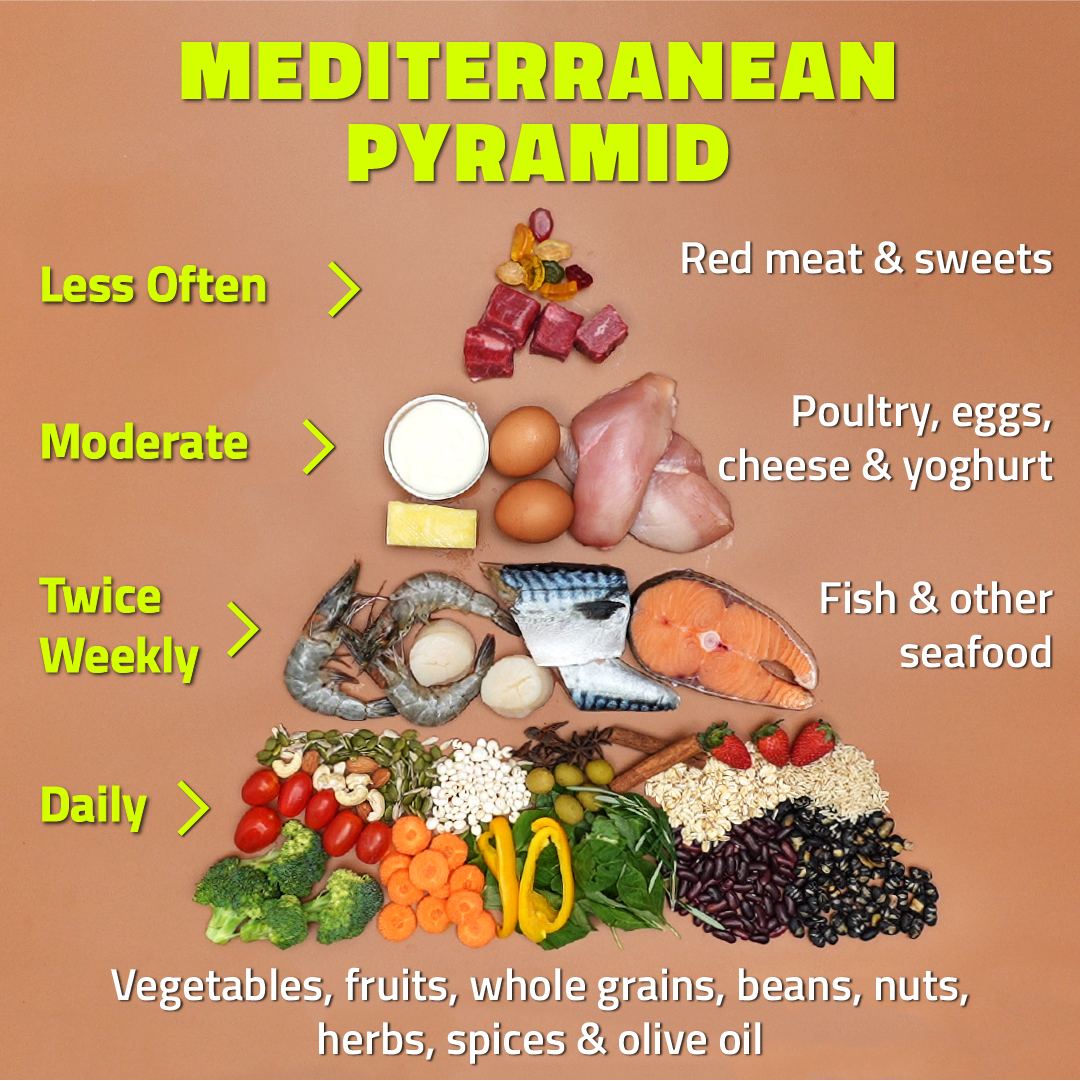
There’s no one right method to follow the Mediterranean diet but here are some basic rules to start with.
• Consume a wide variety of vegetables, fruits, whole grains, beans, nuts, herbs, spices and unsaturated fats such as olive oil daily
• Consume fish and other seafood twice weekly.
• Consume a moderate portion of poultry, eggs, cheese, yoghurt as well as red wine.
• And only occasionally consume red meat and sweets.
A general portion breakdown for this diet would consist of 50% Carbs, 35 - 40% Fats, 15 - 20% Protein.
People following this diet would limit or avoid their consumption of refined grains, refined oil, added sugars, sugar-sweetened beverages, processed meats and other highly processed foods.
GROCERY LIST GUIDE
The Mediterranean diet believes that whole, single-ingredient foods are often crucial to good health. Therefore, to start building your own Mediterranean diet recipes, you’ll want to stock up on:
Whole Grains: Whole oats, brown rice, rye bread, barley, buckwheat and whole grain pasta.
Vegetables: Lettuce, spinach, onions, broccoli, carrots and cucumber.
Fruits: Tomatoes, apples, bananas, nectarines, strawberries, dragon fruit and dates.
Tubers: Potatoes, sweet potatoes and yams.
Nuts & Seeds: Almonds, cashews, walnuts, sunflower seeds, pumpkin seeds etc.
Legumes: Beans, lentils, peas, pulses, and chickpeas
Seafood: Salmon, mackerel, white fish, shrimp and shellfish.
Poultry: Chicken and eggs.
Healthy Fats: Olives, olive oil and avocados.
Dairy: Greek yoghurt, milk and cheese.
Herbs & Spices: Garlic, basil, mint, rosemary, cinnamon, pepper and more.
IN ESSENCE
The Mediterranean way of eating is generally rich in healthy plant foods & relatively lower in animal products and meats, with a focus on fish and seafood. Following this diet long-term can improve your weight and prevent certain health issues such as heart disease, stroke & type-2 diabetes.
DIET #3 LOW CARB
And the final best diet for weight management is the Low Carb Diet. This diet limits your carb intake, which encourages your body to use more fat as fuel.
If you know that you have a higher sensitivity toward carbs and your body has a high resistance to insulin, then the Low Carb diet may work well for you. Insulin is the hormone responsible for controlling your blood sugar levels. A high level of insulin resistance means that your blood sugar levels are likely to spike, after consuming carbs, especially refined carbs.
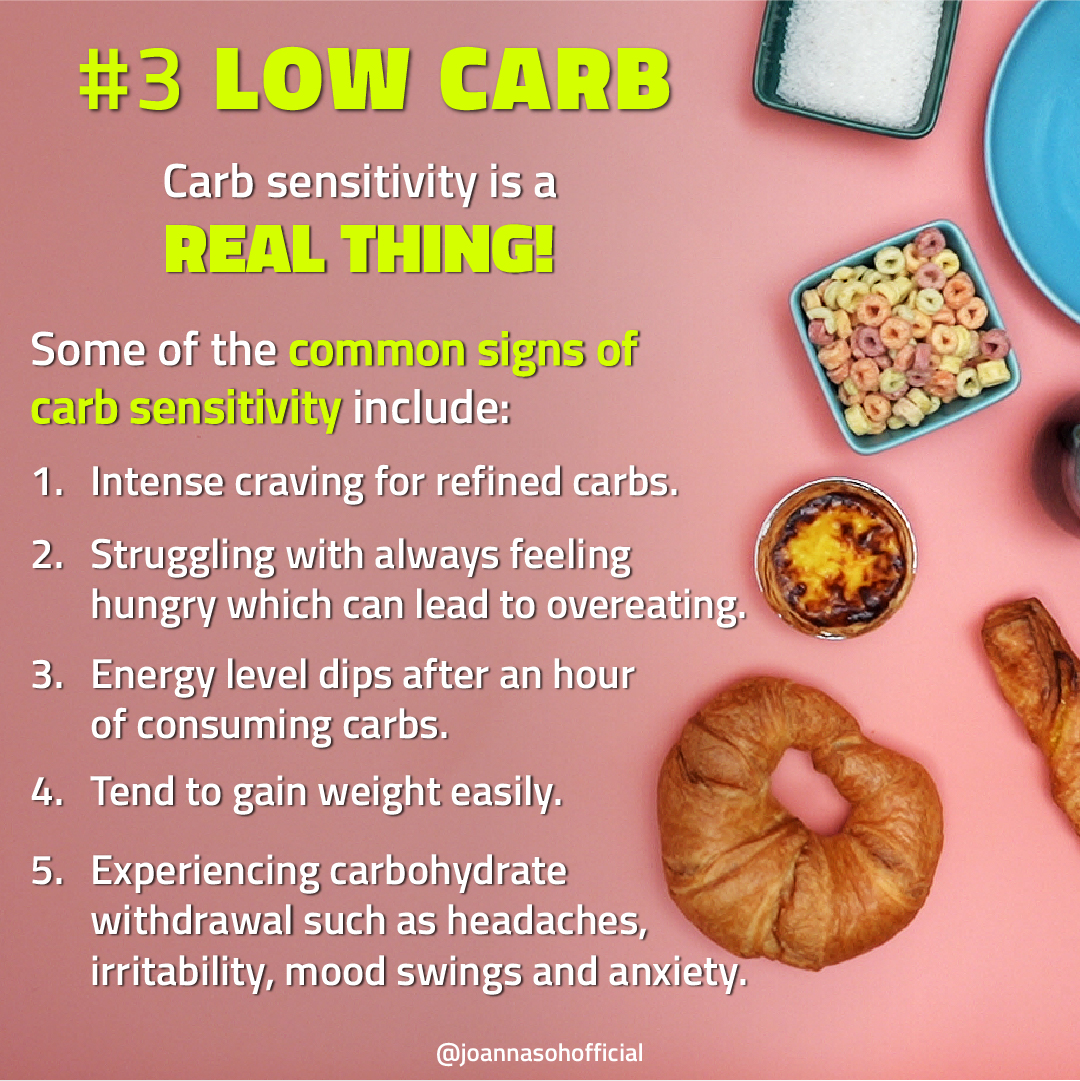 Some of the common signs of carb sensitivity include:
Some of the common signs of carb sensitivity include:
1. Intense craving for refined carbs.
2. Struggling with always feeling hungry which can lead to overeating.
3. Energy level dips after an hour of consuming carbs.
4. Tend to gain weight easily.
5. Experiencing carbohydrate withdrawal such as headaches, irritability, mood swings and anxiety.
Carb sensitivity is a real thing!
And it just might be the reason why weight loss can be challenging for you if you fall under this category. This doesn’t mean that you cannot consume carbs at all. But you need to choose the good carbs and limit the portion. Your goal is to choose non-starchy colourful vegetables, high-quality proteins and healthy fats.
WHAT ARE CARBS?
Let’s first understand, what are carbs. Carbs are an essential part of a healthy diet. However, it’s important to know that not all carbs are created equal. So how do we tell the difference between “good carbs” and “bad carbs”?
“Good Carbs” are complex carbs which are unprocessed and contain fibre found naturally in food. Examples include quinoa, oats, buckwheat noodle, brown rice, sweet potatoes, pumpkin and beans. They are loaded with nutrients and fibre and provide sustained energy.
On the other hand, “Bad Carbs” are refined carbs which have been processed and have had the natural fibre removed or changed. Examples include cereal, cakes, pastries, biscuits, pizza, sodas and added sugars. They are usually lacking in nutrients, hence they are referred to as “empty” calories. Our bodies process refined carbs quickly. They do not provide lasting energy and can cause a spike in blood sugar levels. You want to reduce or avoid all refined carbs in your diet.
PLATING METHOD & PORTION
A low-carb macro breakdown would be 15 - 25% carbs, 40 - 50% protein and 25 - 30% fat. You want to limit your carb intake to about 100 - 150g per day. The key is to limit starchy carbs and consume more non-starchy carbs.
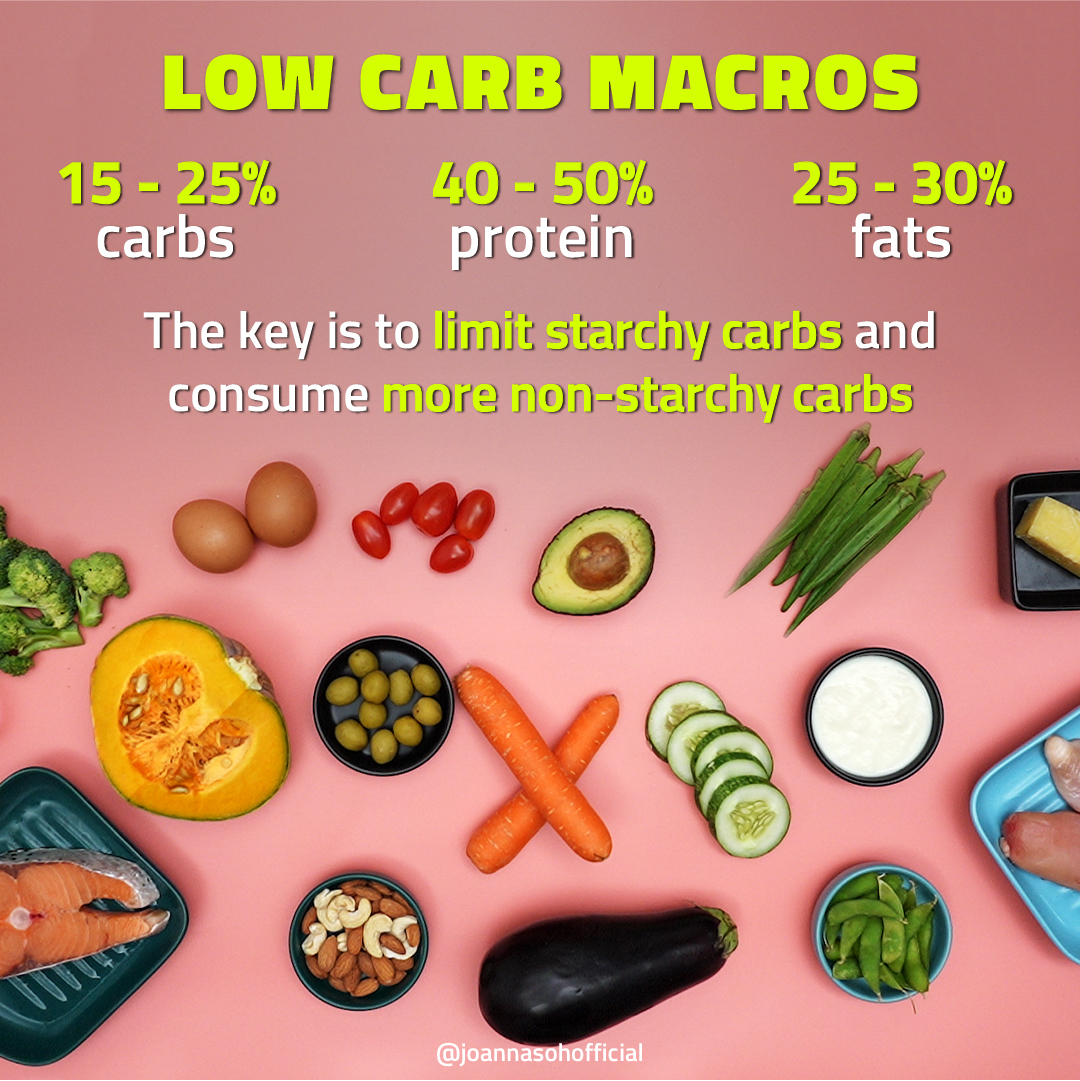
Starchy carbs include bread, potatoes, rice, oats, beans, pasta, barley, yam and banana. Examples of non-starchy carbs are spinach, cabbage, bok choy, carrots, okra, eggplant, tomato, bell pepper, broccoli, mushroom and squash.
Aim to only consume about 2 - 3 servings of starchy carbs in a day for example:
• 1/2 cup of oats for breakfast (27g Carbs)
• 1 small bowl of cooked brown rice for lunch (50g Carbs) and
• Around 150g of sweet potatoes for dinner (30g Carbs).
On the other hand, you can increase your protein portion to 2 servings in each meal.
For example, Cheesy Tuna Omelette for breakfast, 2 portions of chicken breast for lunch, 2 servings of fish for dinner and 1 cup of greek yoghurt topped with nuts and seeds as your snack. Having a high protein diet will keep you full for longer, stabilise your blood sugar levels and reduce cravings.
As for healthy fats, you can easily integrate them into your diet by using olive oil in your cooking and consuming oily fish, peanut butter, avocado, nuts and seeds. Healthy fats keep the heart healthy, protect your organs, support cell growth and provide energy.
IN ESSENCE
When you’re carb-sensitive, consuming carb-rich foods has a greater impact on your overall well-being than merely reducing your caloric intake! Therefore you need to pay more attention to the types of carbs you consume!
SUMMARY
Just know that diets aren’t just for weight loss. While changing your diet can be one of the best ways to lose weight, it can also be a gateway to improving your habits, focusing on your health, and leading a more active lifestyle. (point form - improve habits, focus on health, active lifestyle) Although the 3 diets have been shown to be effective for weight loss, the diet you choose should depend on your lifestyle and food preferences. This ensures that you are more likely to stick to it in the long term.
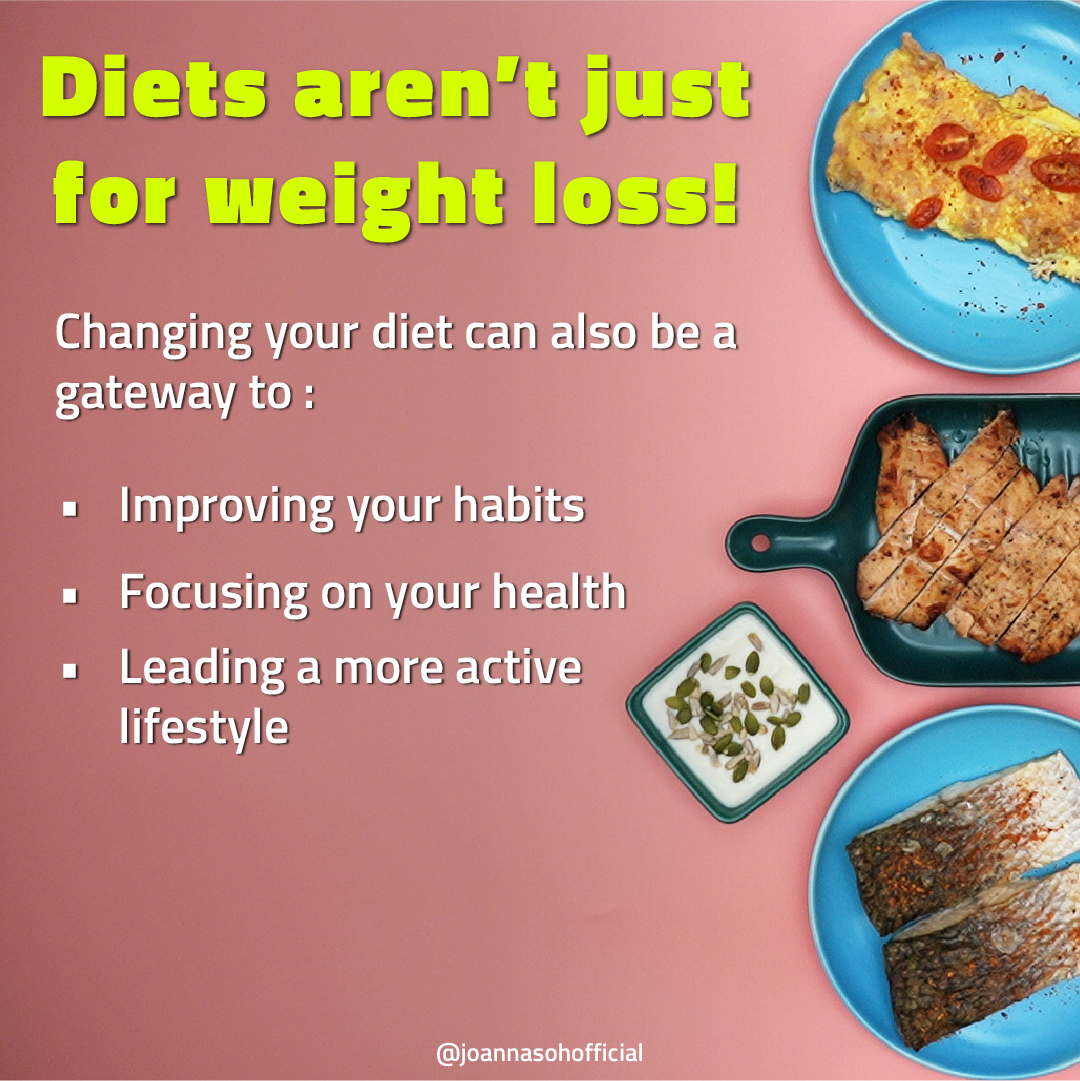
This is just a guideline for you to understand each diet. Before starting any kind of new diet, it’s always a good idea to talk with your doctor about your personal health history. They can help you decide which plan would work best for you.
_



